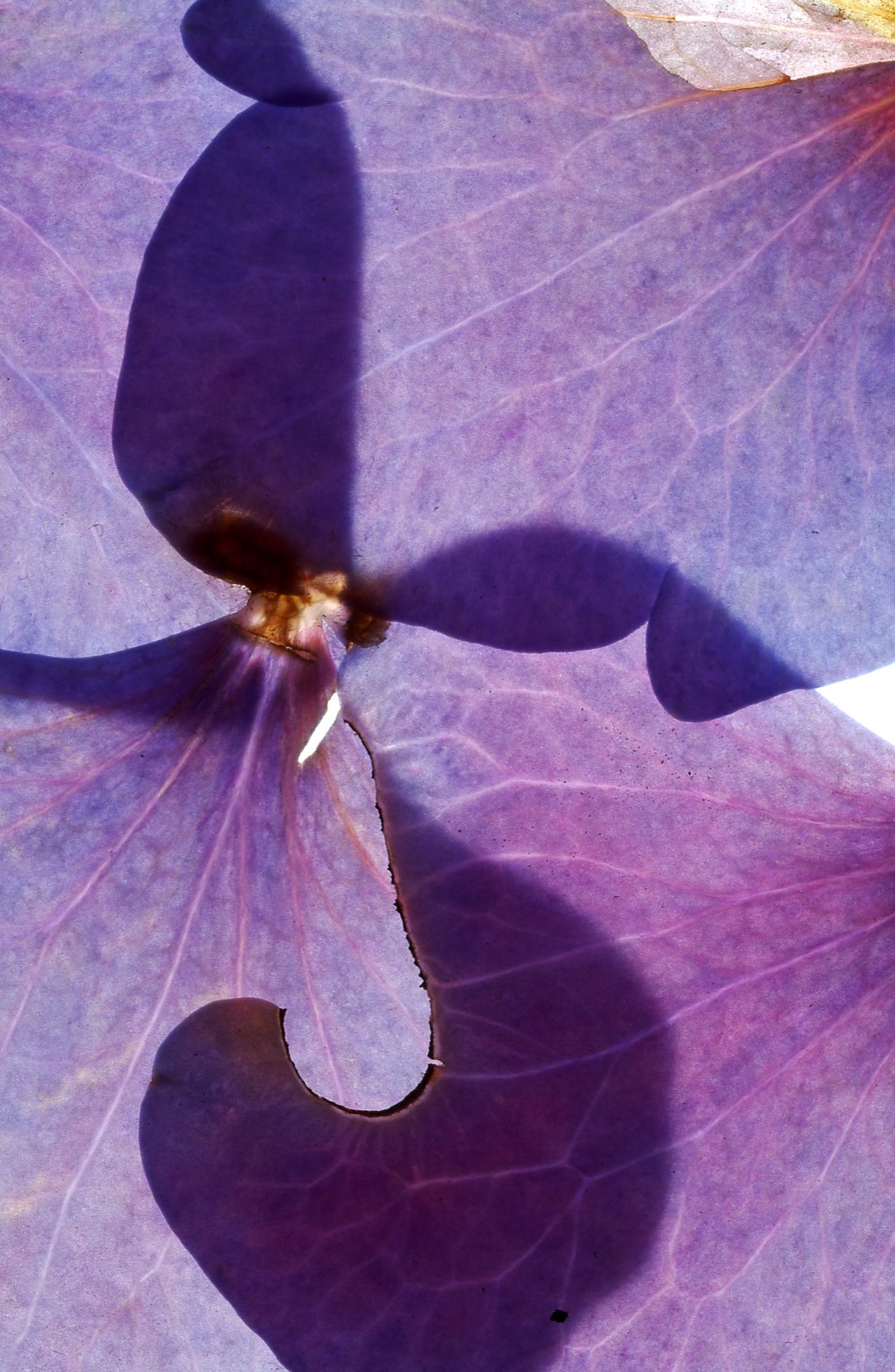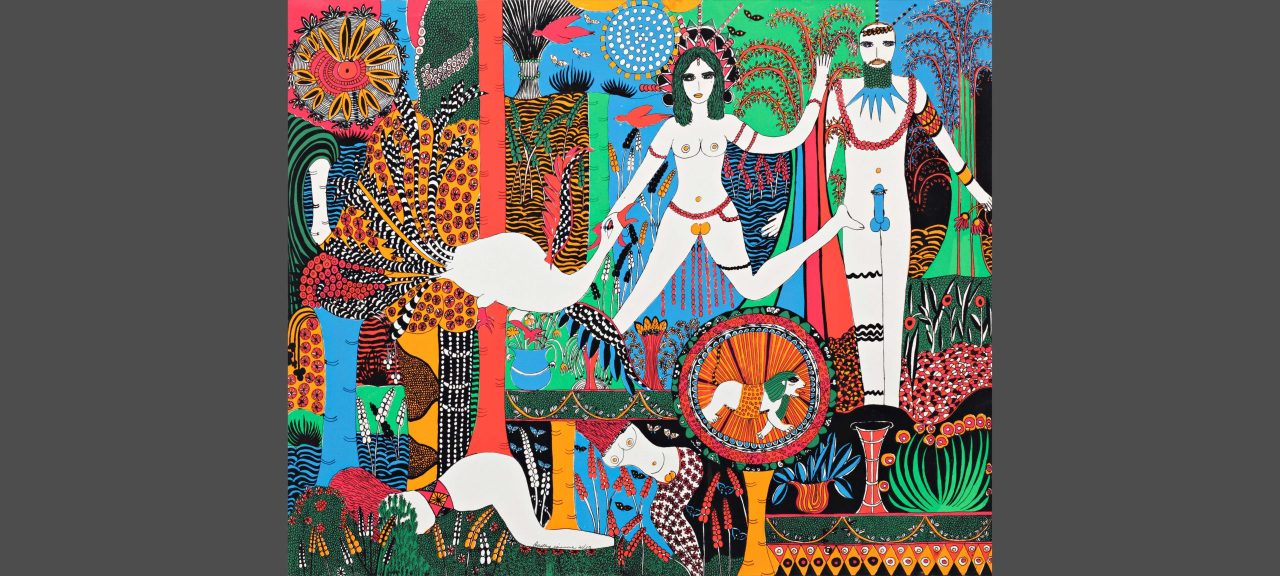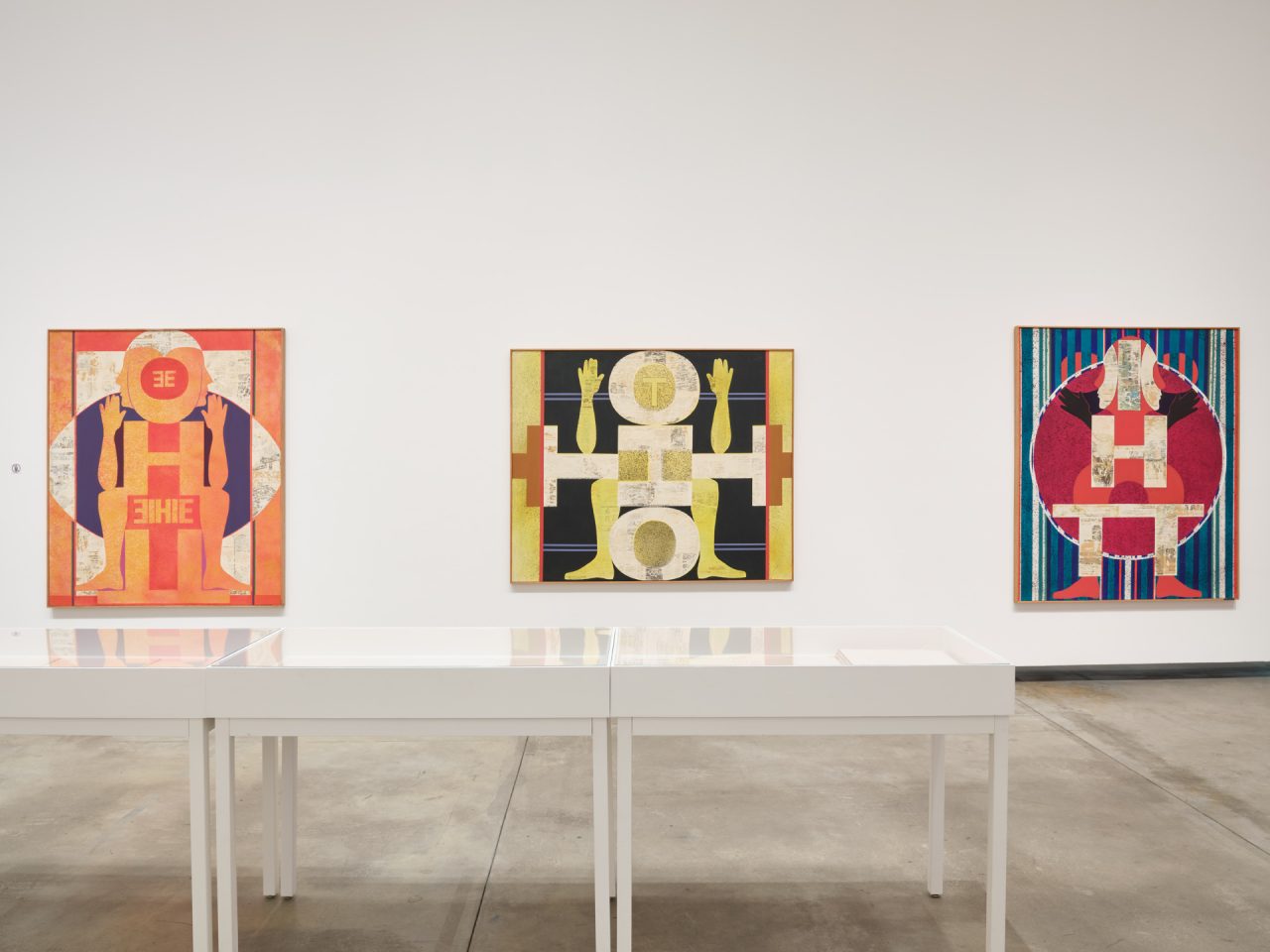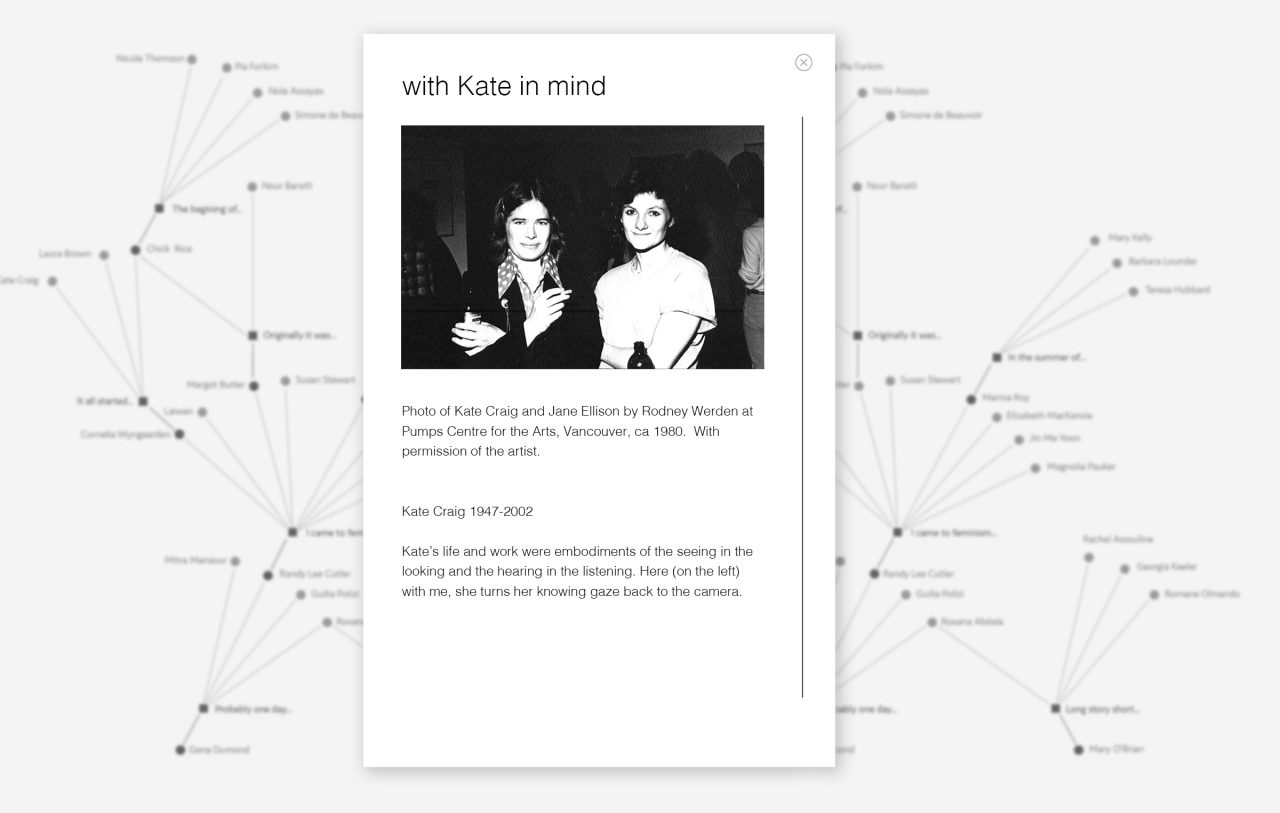18 Jan 2022
Laiwan: Resources for Research
BY BAHAR MOHAZABNIA, Jacqueline morrisseau-Addison, eileen wu, hannah moore, emma chen, aurora sun and ece Asitanelioğlu.
The following are resources related to the artists in Laiwan: Traces, Erasures, Resists. This list is not exhaustive, but rather comprised of suggested readings compiled by researchers at the Belkin. These readings are intended to provide additional context for the exhibition and act as springboards for further research or questions stemming from the exhibition, artist and works involved. Following the introduction, resources are arranged along the themes of traces, erases and resists as explored through and adjacently to Laiwan’s work. This compilation is an evolving and growing list, so check back in the future for more additions.
Traces
This section explores the vocabularies of recorded material – whether archival, archeological or collective – as an area of interest in Laiwan’s work. Through these records, documentation of collective action appears in small-scale zines and publications, ruins of societal epicentres are visually reimagined and the effect of poetic language reexamines how, and who, this language touches. Following these traces through to the present, the sources below touch on the longer trajectories of Laiwan’s career and practice as it has changed over time.
- Learn about the archeology and history of Great Zimbabwe, touched on in Laiwan’s African Notes
- Read an interview with Laiwan on Art and Identity Politics in Vancouver in the 1990s
- Read the Final Report of UBC’s 2021 National Forum on Anti-Asian Racism
- Read a 2-Part series on how Chinese Canadian Arts Communities are responding to the COVID-19 pandemic
- Read an article on Queering the International, a 2014 exhibition curated by Laiwan for Vancouver’s Queer Art Festival
- Read an article about Laiwan winning the 2021 Emily Award and how her practice has transformed over the years
- Read about events in Asian Canadian History
- Visit The City of Vancouver Archives Gay and Lesbian Collection which houses over 750 000 pieces of 2SLGBTQ+ History
Suggested Further Reading
Fatona, Andrea. “Distance of Distinct Vision/Point Eloigne de Vision Claire.” Diaspora Magazine 1, Fall 1993.
Laiwan. “Notes against difference: in search of a functional practice in (re)cognition of evolving idenity in culture(s).” Parallelogramme. Summer 1993.
Laiwan. “So many pixels… So little time! Notes on Tools.” Millenium Messages. Canadian Studies Centre, University of Washington, 1997.
Laiwan. Tender. Vancouver: Talonbooks Press, 2020.
Lee, Tara. “Potent Textuality.” in Asian Canadian Writing Beyond Autoethnography, edited by Eleanor Ty, 201-224. Waterloo: Wilfred Laurier University Press, 2008.
Lai, Larissa. Slanting I, Imagining We: Asian Canadian Literary Production in the 1980s and 1990s. Waterloo: Wilfred Laurier University Press, 2014.
Zhang, Benzi. “The Politics of Re-Homing: Asian Diaspora Poetry in Canada.” in College Literature, no. 1 (2004): 103-25.
Erasures
This category widely broaches historic and contemporary erasures of social movements, individuals and collectives from historical and art canons addressed in the wide scope of Laiwan’s artistic practice. Through tracing the historical and contemporary implications of colonialism and colonial ideologies into so-called Vancouver’s art worlds, the resources below provide a brief contextual “jumping off point” to explore the larger implications of systemic erasures and to reveal a potential of liberation and radical resistance. It also highlights the work that has been done by artists and cultural workers to rectify these erasures.
- Read about Laiwan and her role as the founder of Or Gallery, an artist-run-centre in Vancouver.
- Read an article on liberation, queer history and the legacies of resistance
- Read an article about the systemic erasure and forgetting of the radical roots of LGBTQ resistance in Canada
- Read an article on Laiwan, the history of the Barnacle Bus and Chinatown.
- Read a recent article A Crisis of Whiteness in Canada’s Art Museum from Canadian Art Magazine.
- Watch an animated video on the model minority and histories of silence.
Suggested Further Reading
Freire, Paulo. Pedagogy of Freedom: Ethics, Democracy, and Civic Courage. Lanham: Rowman & Littlefield Publishers, 1998
Fouquet, Monique. “Contemporary art/contemporary Pedagogy: Interrupting Mastery as Paradigm for Art School Education.” University of British Columbia, 2
Laiwan. “Illogical Thoughts About Translation: A Science Fiction.” Front Magazine. March 1998.
Li, Xiaoping. Voices Rising: Asian Canadian Cultural Activism. Vancouver: UBC Press, 2007.
Millward, Liz. Making a Scene: Lesbians and Community across Canada, 1964-84. Vancouver: UBC Press, 2016.
Robertson, Clive. “Artist-run culture: locating a history of the present” in Policy Matters: Administrations of Art and Culture. Toronto: YYZ Books, 2006.
Forbear, Katherine. “In Order for You to Love Something, You Need to Have Memories: Exploring Feelings of Being In and Out of Place in Vancouver, BC.” in BC Studies: The British Columbian Quarterly, No. 206: Summer 2020. https://doi.org/10.14288/bcs.v0i206.189498
Resists
This section explores historical and contemporary acts of resistance in so-called Vancouver and across Canada more broadly to provide insight into movements and organizations contributing to the liberation of marginalized communities. Laiwan’s practice recognizes deconstruction and resistance as acts that nurture new potentials for life and wellbeing, particularly in the face of ongoing oppressive and violent policies. The sources below highlight the multi-faceted aspects of resistance, notably acts of resistance by Asian and Queer communities.
- Read an article on Laiwan’s Maple Tree Spiral: the pedagogy of a tree in the city
- Read an interview with Laiwan about her 2021 installation, How Water Remembers, at the Massy Arts Gallery
- Read an article on the impact of the 2014 Vancouver Queer Arts Festival on 2SLGBTQ+ activism
- Read an article about artist and activist networks across Asian Canadian Arts communities in the 1980s and 1990s
- Read a 3-part series that explores the History of Anti-Asian Racism in Vancouver
Suggested Further Reading
Bird, Kate and Charles Demers. City on Edge: A Rebellious Century of Vancouver Protests, Riots, and Strikes. Berkeley; Vancouver; Greystone Books, 2017.
Brochu-Ingram, Gordon Brent. “Building Queer Infrastructure: Trajectories of Activism and Organizational Development in Decolonizing Vancouver.” in Queer Mobilizations: Pan-Canadian Perspectives on Activism and Public Policy. Vancouver: University of British Columbia Press, 227-249.
Cronin, J. Keri. Imagining Resistance: Visual Culture and Activism in Canada. Waterloo: Wilfred Laurier University Press, 2011.
Laiwan. “improvising what is to come.” ESSE 53. 2005.
Lin, Hui Ling. “Putting Identities in Questions: A Brief Introduction of Queer Asian Filmmakers in Vancouver.” in West Coast Line. Summer 2008, 140-146, 159.
Warner, Tom. Never going back: a history of queer activism in Canada. Toronto: University of Toronto Press, 2002.
Image (above): Laiwan, African Notes Parts 1 and 2, 1983/2020
Related
-
Exhibition
7 Jan – 10 Apr 2022
Laiwan: Traces, Erasures, Resists

Laiwan: Traces, Erasures, Resists highlights the artist's attention to the material and symbolic vocabularies of print and lens-based media between 1980 and 2000 and features her early interventions into the logic of the book form and the ideology of historical and encyclopedic genres. Guest curated by Amy Kazymerchyk, the exhibition title references processes related to printmaking, while also speaking to the absent narratives, redacted perspectives and critical refusals that are latent in official publications.
[more] -
News
03 Mar 2021
Works from the Collection: Laiwan

Laiwan writes, "Begun in 1987 investigating the questions, What is an image? What is a photograph?, she who had scanned the flower of the world... is an ongoing project where I collect flowers from the city I am showing in, placing the petals into slide mounts."
[more] -
Exhibition
8 Jan – 11 Apr 2021
Stations: Some Recent Acquisitions

Due to the uncertainty caused by the COVID-19 pandemic, we are postponing the Image Bank exhibition until June 2021. Our January exhibition will draw on recent acquisitions to the permanent collection. Titled Stations: Some Recent Acquisitions, the exhibition will be in four or five interrelated modules that explore some of the gallery’s research areas.
[more] -
News
28 Jan 2021
Stations: Reading Room

The following is a list of resources related to the artists in Stations: Some Recent Acquisitions. This list is not exhaustive or an official recommendation, but rather comprised of suggested readings compiled by Public Programs, graduate and undergraduate student researchers at the Belkin. These readings are intended to provide additional context for the exhibition and act as springboards for further research or questions stemming from the exhibition, artists and works involved. Resources are arranged by artist, listed alphabetically by last name. This compilation is an evolving and growing list, so check back in the future for more additions.
[more] -
News
09 Feb 2021
Stations: Instagram Takeover with Marcus Prasad
 [more]
[more] -
Event
3 Nov 2018 from 1-2:30 pm
Independent Archives Week 2018. Artists Respond: Laiwan, Elizabeth MacKenzie and Cindy Mochizuki

How do we respond to archives both public and private? In this come-and-go event, artists Laiwan, Elizabeth MacKenzie and Cindy Mochizuki respond to artist Christine D'Onofrio's online project, Intuition Commons and the Belkin Gallery's Archive. The activities are open for viewing, listening and conversations throughout the event. Light refreshments will be served.
[more]